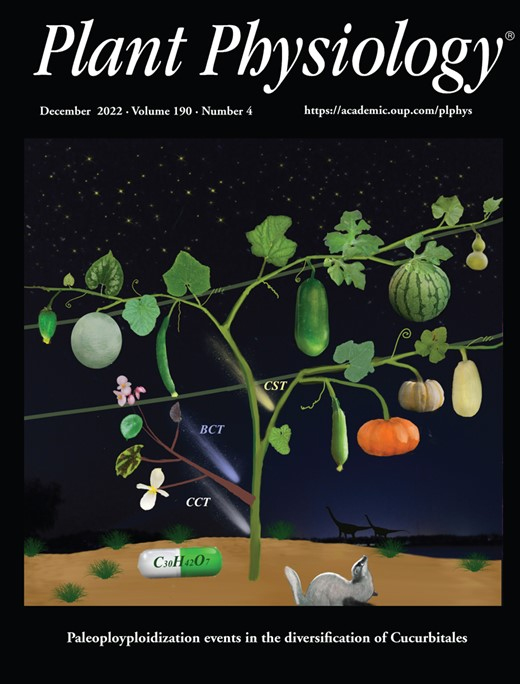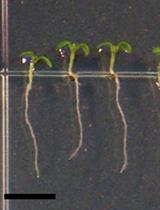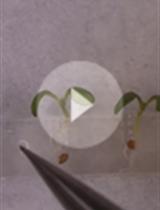- EN - English
- CN - 中文
Generating Reproducing Anoxia Conditions for Plant Phenotyping
生成可重复的缺氧条件用于植物表型分析
发布: 2023年02月05日第13卷第3期 DOI: 10.21769/BioProtoc.4603 浏览次数: 1839
评审: Wenrong HeYao XiaoAnonymous reviewer(s)
Abstract
Based on the availability of oxygen, plant growth environment can be normoxic (normal environment), hypoxic (reduced oxygen, <21%), or anoxic (complete depletion of oxygen). Hypoxic/anoxic environment is created when a plant is exposed to stresses such as submergence, flooding, or pathogen attack. Survival of the plants following stress conditions is in part dependent on their ability to overcome the stress induced by anoxia/hypoxia conditions. This shows the need for the development of strategies for understanding the mechanisms involved in plant tolerance to anoxia. Previous studies have employed different methods for establishing an anerobic environment. Here, we describe a simple method for creating anoxic environment using an anaerobic atmosphere generation bag. Anoxic conditions can be maintained in a cylindrical jar, a rectangular box, or a vacuum sealer bag, enabling the screening of a large number of samples. This protocol is particularly useful to screen plant mutants that are tolerant to anoxia. The method is simple, easy, cost-efficient, reproducible, and does not require any sophisticated instruments.
Graphic abstract

Background
Anaerobic conditions are part of an ensemble of stresses plants incur during submergence. Flooding also imposes temperature changes and altered oxidative conditions (Sasidharan et al., 2018). While submergence assays for plants have been detailed, they are often hard to perform and produce variable results (Bui et al., 2020; Yang et al., 2022; Loreti and Perata, 2020). Meanwhile, multiple methods have been used to create anaerobic conditions (Clark, 2019). Some of these methods include the Hungate technique, which uses a roll-tube approach to culture medium through which anoxic gas is bubbled to remove the remaining oxygen (Hungate, 1969). Other techniques are the VPI (Virginia Polytech Institute) method, a modification to the Hungate technique for large-scale culture using pre-reduced medium (Moore, 1966), and Glove-box chambers, a sealed chamber with attached gloves that are filled with anoxic gases (Clark, 2019). Recently, glass desiccators have been used for creating a hypoxic environment for plants. The method involves flushing oxygen-depleted air (humidified 100% N2 gas) into air-tight closed glass desiccators under dark conditions to generate an anoxic environment (Hartman et al., 2019). Similarly, an enclosed anerobic workstation (Anaerobic System model 1025; Forma Scientific) has been used for generating an anoxic environment for plant experiments (Loreti et al., 2018). Some of the disadvantages of these older methods include accidental gas leaks that expose the chamber to oxygen, high cost of gas tanks, regular maintenance requirements, space limitation, single purpose application, and lower efficiency and complexity (Killgore et al., 1973). Here, we introduce a simple and robust anoxia assay. Compared to previous methods, this protocol is quick, easy to perform, highly reproducible, and economical, requires minimum space, and produces a controlled (0% oxygen) anoxic environment.
Materials and Reagents
Aluminum foil
Anaerobic atmosphere generation bags, OxoidTM AnaeroGenTM 2.5 L sachet (Thermo Scientific; catalog number: OXAN0025A)
AnaeroPackTM 2.5 L rectangular jar (Thermo Scientific, catalog number: R685025)
FalconTM 15 mL conical tubes (CorningTM, catalog number: 14-959-53A)
Protect laboratory bottles (DURAN, PSC-47-11619)
Anaerobic system/cylindrical jar (BD GasPakTM 150 Systems, catalog number: 11-816)
Microcentrifuge tubes, 1.5 mL (PierceTM, catalog number: 69715)
Petri plates with clear lid (FisherbrandTM, catalog number: S33580A)
Surgical tape (Micropore, available through Amazon, USA)
Vacuum sealer bags (Wevac, available through Amazon, USA)
Anaerobic indicator (Thermo Scientific, catalog number: BR0055B)
Vaseline® (available through Amazon, USA)
Half-strength MS media (see Recipes; modified from Cheng et al., 2003)
Murashige and Skoog basal salt mixture (MS) media (Sigma-Aldrich, catalog number: M5524)
Sucrose (Sigma-Aldrich, catalog number: S1888)
Agar (Sigma-Aldrich, catalog number: A1296)
2-(N-Morpholino) ethanesulfonic acid (MES) (Sigma-Aldrich, catalog number: M3671)
Potassium hydroxide (KOH) (Sigma-Aldrich, catalog number: 221473)
20% (V/V) bleach (see Recipes)
Commercially available bleach (Clorox concentrated household bleach; available through Amazon, USA)
80% (V/V) acetone (see Recipes)
Acetone (Sigma-Aldrich, catalog number: 179124)
Plant materials
Recently, we have established that loss of a tonoplast-localized H+/Ca transporter, CAX1, imparts tolerance to anoxia. A mutation in another H+/Ca transporter, CAX3, is sensitive to anoxia in a manner indistinguishable from wildtype Colombia-0 (Col-0) (Yang et al., 2022). In the present study, we have used the same three mutants (two cax1 alleles and one cax3 mutant) along with Col-0 to standardize the anoxia assay conditions; the details are given below.
Arabidopsis wild type (Col-0)
Arabidopsis mutants:
cax1-1 - CS25435 (Cheng et al., 2003)
cax1-2- SALK_021486 (Catala et al., 2003)
cax3-1- CS25429 (Cheng et al., 2003)
Equipment
Varian Cary 50 Bio UV-visible spectrophotometer
Laminar air flow hood (SteriGard Hood, The Baker Company, Main, US)
Pipettes (GILSON, PIPETMAN CLASSIC P1000, catalog number: F123602 and GILSON, PIPETMAN L P20L, 2–20 µL, catalog number: FA10003M)
Nikon D80 Digital SLR camera (Nikon Corp., Tokyo, Japan)
Plant growth chamber (Geneva Scientific, CU-36L6 tissue culture chamber)
Heat poly bag sealer (Thomas Scientific, catalog number: 1147J64)
Procedure
文章信息
版权信息
© 2023 The Authors; exclusive licensee Bio-protocol LLC.
如何引用
Mathew, I. E., Rhein, H. S., Green, A. J. and Hirschi, K. D. (2023). Generating Reproducing Anoxia Conditions for Plant Phenotyping. Bio-protocol 13(3): e4603. DOI: 10.21769/BioProtoc.4603.
分类
植物科学 > 植物生理学 > 表型分析
植物科学 > 植物生理学 > 无菌培养
您对这篇实验方法有问题吗?
在此处发布您的问题,我们将邀请本文作者来回答。同时,我们会将您的问题发布到Bio-protocol Exchange,以便寻求社区成员的帮助。
提问指南
+ 问题描述
写下详细的问题描述,包括所有有助于他人回答您问题的信息(例如实验过程、条件和相关图像等)。
Share
Bluesky
X
Copy link












